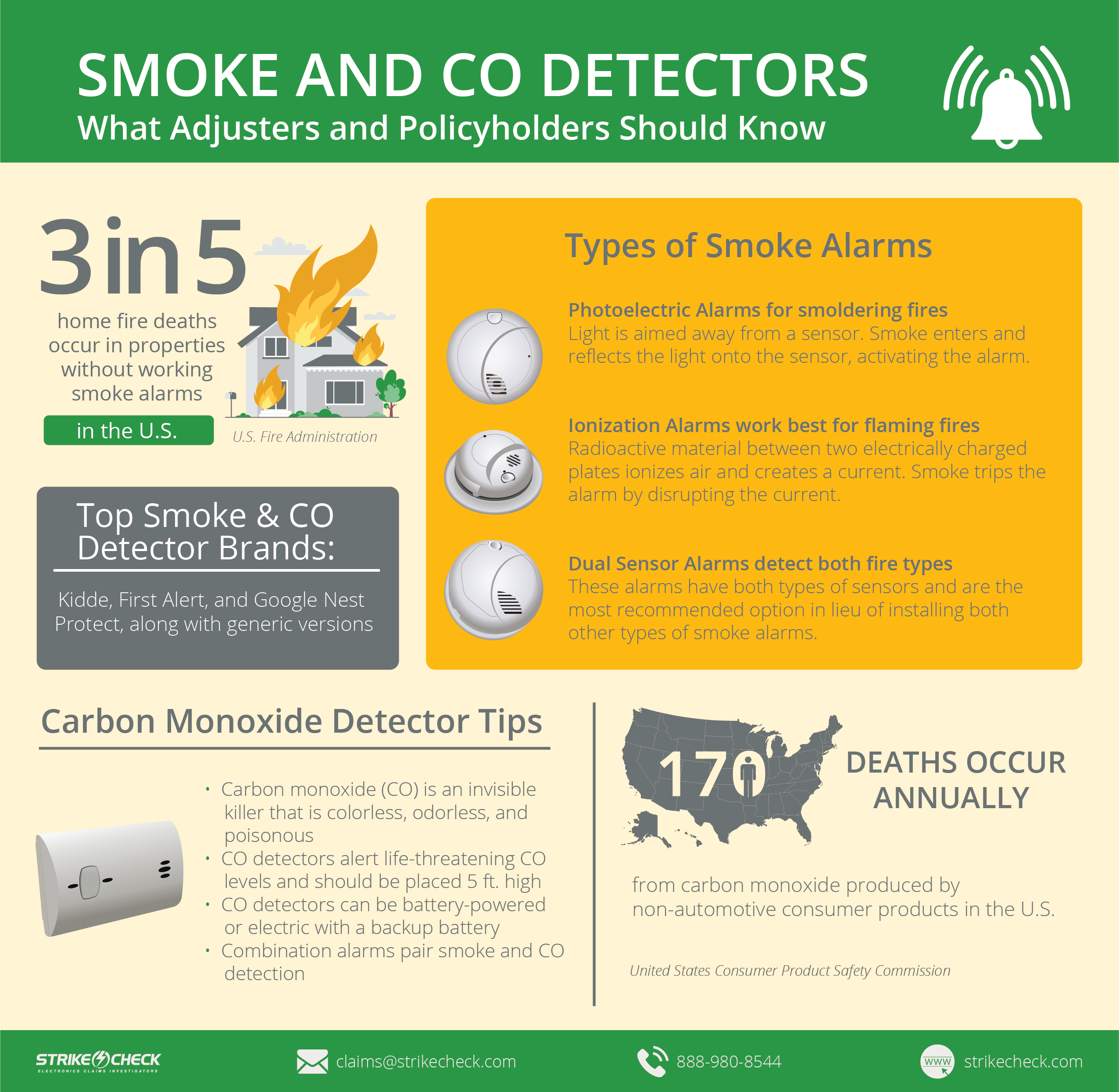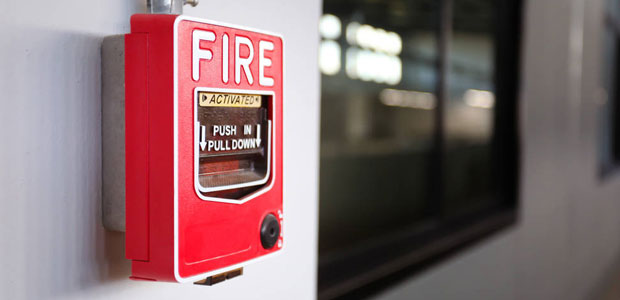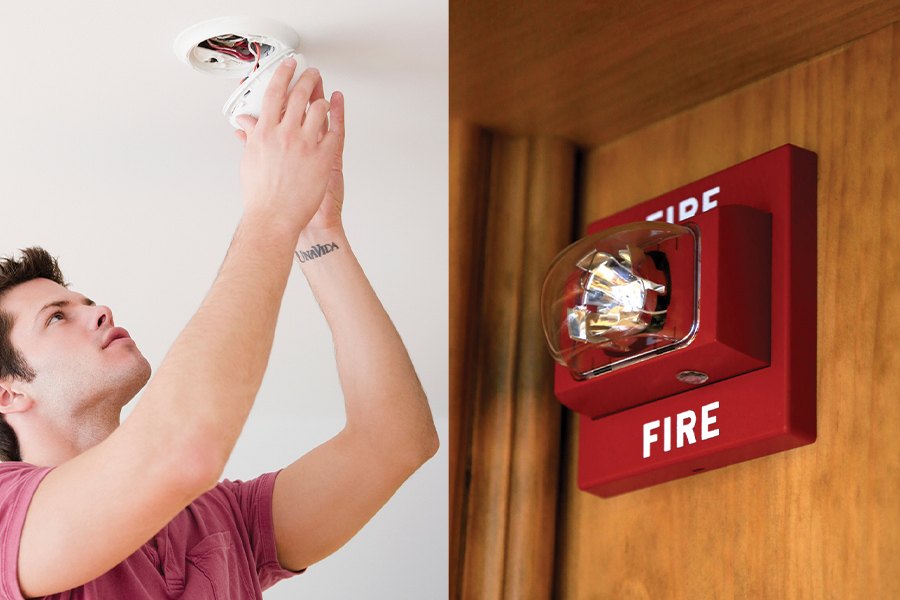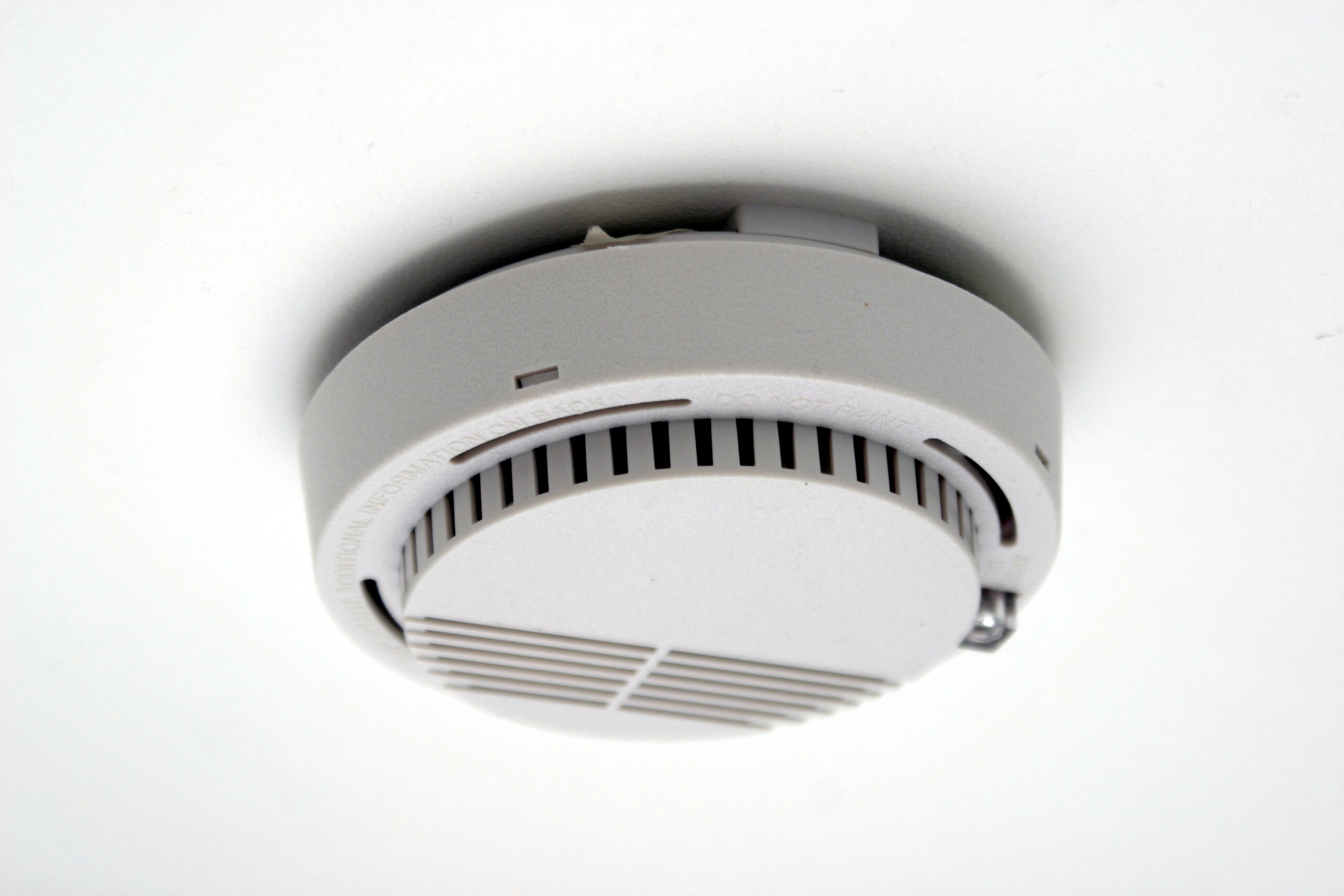Fire alarms detect smoke, heat, or carbon monoxide. They alert occupants to potential fires, ensuring safety.
Fire alarms play a crucial role in home and workplace safety. These devices are designed to detect smoke, heat, or carbon monoxide, triggering an alarm to warn occupants. Early detection allows for quick evacuation and can save lives. Modern fire alarms come with various features, including interconnected systems and smart technology.
They offer reliable protection and peace of mind. Regular maintenance and testing ensure they function correctly. Installing fire alarms in key areas like kitchens, bedrooms, and hallways is essential. Proper placement and upkeep make a significant difference in emergency situations. Make fire alarms a priority to enhance safety in any environment.

Credit: strikecheck.com
Introduction To Fire Alarms
Fire alarms are essential safety devices. They alert people to fires. They save lives and property. Fire alarms detect smoke, heat, and flames. They are crucial in homes and buildings.
Purpose Of Fire Alarms
Fire alarms have a clear purpose. They detect fires early. They give people time to escape. They reduce the risk of injuries and deaths. Fire alarms alert emergency services quickly.
Fire alarms come in different types. Some detect smoke. Others detect heat or flames. Each type helps in different fire situations.
Importance In Safety
Fire alarms play a vital role in safety. They are the first line of defense. They help prevent fire spread. Early detection is key to fire safety.
- Smoke alarms detect smoke particles.
- Heat alarms respond to high temperatures.
- Flame detectors sense fire flames.
Every home should have fire alarms. They should be tested regularly. Batteries should be changed often. Proper maintenance ensures they work correctly.
| Type of Fire Alarm | Detection Method |
|---|---|
| Smoke Alarm | Detects smoke particles |
| Heat Alarm | Senses high temperatures |
| Flame Detector | Identifies fire flames |
Installing fire alarms is easy. Place them on each floor. Put them near sleeping areas. Fire alarms save lives every day. Make sure your home is protected.
Types Of Fire Alarms
Fire alarms are essential for home safety. They detect smoke and fire. There are different types of fire alarms. Each type has unique features. Let’s explore the common types of fire alarms.
Ionization Alarms
Ionization alarms are best for detecting fast-flaming fires. They use a small amount of radioactive material. This material ionizes the air in the alarm. When smoke enters, it disrupts the ionization. This triggers the alarm. Ionization alarms are very sensitive. They can detect even small amounts of smoke. This makes them very effective for sudden fires.
Photoelectric Alarms
Photoelectric alarms excel at detecting smoldering fires. They use a light sensor and a light beam. When smoke enters the chamber, it scatters the light. The sensor detects this scattered light. This triggers the alarm. Photoelectric alarms are less likely to cause false alarms. They are ideal for detecting slow-burning fires. These alarms respond quickly to smoke from smoldering fires.
Choosing the right fire alarm is crucial. Each type has its strengths. Understanding these can help keep your home safe.
Smoke Detection
Smoke detection is crucial for early fire warning. It saves lives and property. Smoke alarms are essential in every home and building.
How Smoke Alarms Work
Smoke alarms detect smoke particles in the air. They use sensors to sense smoke. There are two main types of smoke alarms:
- Ionization smoke alarms
- Photoelectric smoke alarms
Ionization smoke alarms detect fast-burning fires. They use a small amount of radioactive material. This material ionizes the air. Smoke disrupts this ionization, triggering the alarm.
Photoelectric smoke alarms detect slow, smoldering fires. They use a light beam inside the detector. Smoke particles scatter the light, activating the alarm.
Common Sources Of Smoke
Understanding common smoke sources helps in fire prevention. Some usual sources include:
- Cooking: Burning food can produce smoke.
- Cigarettes: Lit cigarettes can start fires.
- Electrical faults: Faulty wiring can cause smoke.
- Heating devices: Heaters and fireplaces can emit smoke.
It’s vital to identify these sources. Proper maintenance can prevent smoke and fires.

Heat Detection
Heat detection is a crucial function of fire alarms. It ensures the safety of your home or business by identifying abnormal temperature changes. This section explains how heat sensors work and the different types of heat detectors available.
Function Of Heat Sensors
Heat sensors play a vital role in fire alarms. They detect temperature rises that signal a potential fire. These sensors measure the air temperature in the environment. Once the temperature exceeds a set limit, the alarm activates. This early warning system can save lives and property.
Types Of Heat Detectors
There are two main types of heat detectors: Fixed Temperature and Rate-of-Rise.
| Type | Function |
|---|---|
| Fixed Temperature | Activates when a set temperature is reached. |
| Rate-of-Rise | Triggers when the temperature rises quickly. |
- Fixed Temperature Detectors: These detectors have a predetermined temperature limit. When the environment reaches this limit, the alarm sounds. They are simple and reliable.
- Rate-of-Rise Detectors: These detectors measure how quickly the temperature increases. If the rise is rapid, the alarm activates. They are ideal for detecting sudden fires.
- Choose the right type of heat detector for your needs.
- Ensure proper installation for accurate detection.
- Regularly test and maintain your heat detectors.
Carbon Monoxide Detection
Carbon monoxide (CO) is a silent, deadly gas. It has no smell or color. CO alarms detect this dangerous gas to keep you safe.
Dangers Of Carbon Monoxide
CO poisoning can be very harmful. It can cause headaches, dizziness, and nausea. High levels can even lead to death. CO is produced by burning fuel. This includes gas, wood, oil, and charcoal. Faulty appliances can leak CO. This is why CO alarms are important.
Co Alarms
CO alarms sense dangerous levels of carbon monoxide. They alert you with a loud sound. Installing CO alarms in your home is crucial. Place them near bedrooms and on each floor. Test your alarms monthly. Replace their batteries regularly.
| Feature | Description |
|---|---|
| Detection | Senses CO levels |
| Alert | Emits a loud alarm |
| Placement | Near bedrooms, each floor |
| Maintenance | Test monthly, replace batteries |
Gas Detection
Fire alarms can detect more than just smoke. They also detect gases. This helps keep homes and buildings safe. Two main types of gas detection are important: combustible gas alarms and toxic gas sensors.
Combustible Gas Alarms
Combustible gas alarms detect gases that can catch fire. These include propane, methane, and butane. These gases are often used in homes and businesses. A leak can cause a fire or explosion.
Combustible gas alarms work by sensing gas levels in the air. If the gas level gets too high, the alarm sounds. This warns people to leave the area and fix the leak.
Here are some key features of combustible gas alarms:
- Sensitive sensors detect even small gas leaks.
- Loud alarms alert everyone in the area.
- Easy installation makes them user-friendly.
Using combustible gas alarms can save lives. They are a crucial part of any fire safety system.
Toxic Gas Sensors
Toxic gas sensors detect harmful gases. These gases can make people sick or even cause death. Common toxic gases include carbon monoxide (CO) and hydrogen sulfide (H2S).
Carbon monoxide is a colorless, odorless gas. It is often called the “silent killer.” It comes from burning fuels like gas, wood, or coal.
Hydrogen sulfide smells like rotten eggs. It is found in places like sewers and farms.
Toxic gas sensors work by measuring gas levels in the air. If the level gets too high, the alarm sounds. This lets people know to leave the area and get fresh air.
Here are some key features of toxic gas sensors:
- Real-time monitoring for constant safety.
- Visual and audio alarms for clear warnings.
- Portable options for use in different places.
Toxic gas sensors are vital for health and safety. They protect against dangerous gases that can harm people.
Advanced Fire Detection Technologies
Fire alarms have evolved significantly over the years. Modern fire detection technologies offer enhanced safety and reliability. These advanced systems can detect various signs of fire, providing early warnings. Let’s explore some of these cutting-edge technologies.
Multi-sensor Alarms
Multi-sensor alarms use more than one type of sensor to detect fire. They can sense smoke, heat, and carbon monoxide. This multi-sensor approach reduces false alarms. It also ensures quicker and more accurate detection.
Here are some benefits of multi-sensor alarms:
- Fewer false alarms
- Better detection accuracy
- Increased response time
Smart Home Integration
Fire alarms can now integrate with smart home systems. This integration allows users to monitor and control alarms remotely. Using a smartphone app, you can receive alerts and notifications. You can also silence false alarms from your phone.
Smart home integration offers:
- Real-time monitoring
- Remote control capabilities
- Instant alerts and notifications
These advanced technologies make fire alarms more efficient and user-friendly. They ensure your home is always protected.

Maintaining Your Fire Alarm System
Keeping your fire alarm system in top shape is crucial. A well-maintained fire alarm can save lives and property. Regular upkeep ensures your fire alarm works effectively when needed.
Regular Testing
Test your fire alarm monthly. This ensures it functions properly. Follow the manufacturer’s instructions for testing. Use the test button on the alarm. If it sounds, it works. If not, troubleshoot or replace it.
Battery Replacement
Replace the batteries twice a year. Dead batteries render the alarm useless. Use high-quality batteries for reliability. Mark your calendar for reminders. Some alarms chirp when batteries are low. Don’t ignore this warning.
| Action | Frequency |
|---|---|
| Test Alarm | Monthly |
| Replace Batteries | Twice a Year |
- Test all alarms in your home.
- Replace batteries during daylight savings time changes.
- Keep a spare set of batteries.
Frequently Asked Questions
Do Smoke Detectors Detect Anything Besides Smoke?
Yes, some smoke detectors also detect carbon monoxide and gas leaks. They enhance home safety by monitoring multiple hazards.
Do Fire Alarms Detect Carbon Monoxide?
Fire alarms typically do not detect carbon monoxide. You need a separate carbon monoxide detector for that. Some devices combine both fire and carbon monoxide detection. Always check the specifications to ensure proper protection.
What Chemicals Do Fire Alarms Detect?
Fire alarms detect smoke, carbon monoxide, and other combustion gases. They sense these chemicals to alert occupants of potential fire hazards.
What Do Smoke Alarms Detect?
Smoke alarms detect smoke, heat, or both. They sense particles from burning materials and alert you to fire hazards.
Conclusion
Understanding what fire alarms detect is crucial for safety. These devices sense smoke, heat, and carbon monoxide. Having the right fire alarm can save lives and property. Regular maintenance ensures they function correctly. Stay protected by choosing reliable fire alarms and ensuring they are properly installed and maintained.
Safety first, always.

I’m Abdus Sobur, a highly skilled and professional Fire Safety Officer with a passion for safeguarding lives and property. Over the course of my career, I’ve conducted numerous successful fire safety audits, earning a reputation for excellence in ensuring public safety.
In addition to my role as a Fire Safety Officer, I’m also dedicated to raising awareness about the importance of fire safety. Through my blog, I share insights into the functions of different fire safety equipment, aiming to empower individuals with the knowledge they need to protect themselves and their communities.
I’m driven by a deep commitment to promoting fire safety awareness and preventing fire-related incidents.

